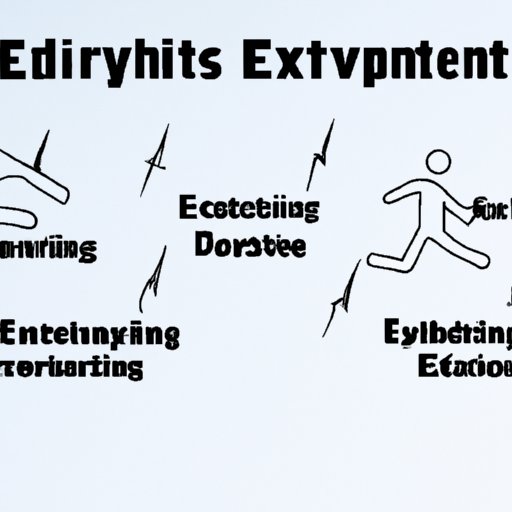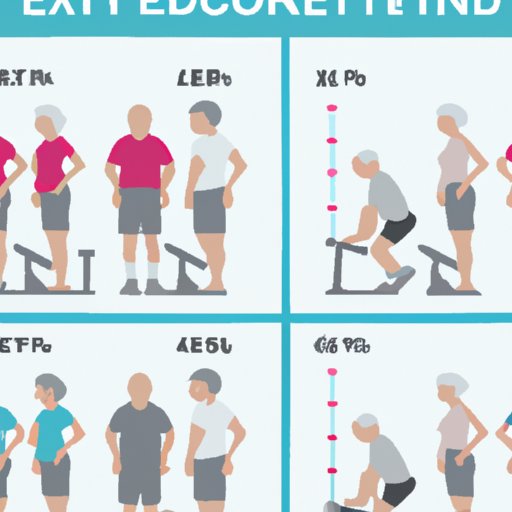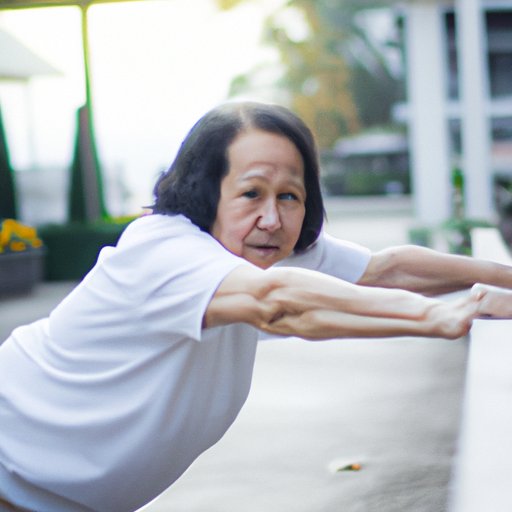Introduction
Exercise is an important part of living a healthy lifestyle, but it can be difficult to know how much you should be doing each day. This article will explore the recommended amount of exercise per day, the benefits of regular exercise, and ways to help you reach your fitness goals.

Interviewing an Expert on the Recommended Amount of Exercise Per Day
To get a better understanding of how much exercise we should be getting each day, I interviewed Dr. Monica Bhatia, a sports medicine specialist at the University of Michigan. She has been working in the field for over 15 years and specializes in helping people create individualized exercise plans to meet their needs.
When asked about the recommended amount of exercise per day, she said: “The American Heart Association recommends at least 150 minutes of moderate-intensity aerobic activity or 75 minutes of vigorous-intensity aerobic activity per week for adults 18 and older. Additionally, adults should do muscle-strengthening activities at least two days a week.”
Dr. Bhatia also emphasized the importance of finding activities that you enjoy and that fit into your lifestyle. She said: “It’s important to find activities that you like doing so that you can stick with them. Try different activities to find out what works best for you and make sure to schedule time for exercise so that it becomes part of your daily routine.”
Examining the Benefits of Exercising Regularly
Regular exercise can have numerous positive effects on both your physical and mental health. Here are some of the benefits of exercising regularly:
Mental Health Benefits
Exercising regularly can reduce stress, improve mood, and increase energy levels. It can also help improve cognitive function and reduce symptoms of depression and anxiety.
Physical Health Benefits
Regular exercise can help you maintain a healthy weight, reduce your risk of chronic diseases such as heart disease and diabetes, and improve your overall health. It can also help improve your balance and coordination and strengthen your muscles and bones.
Social Benefits
Exercising can be a great way to socialize and meet new people. Joining a gym or group fitness class can provide a supportive environment and help keep you motivated.

Exploring Different Types of Exercise and Their Effects
There are many different types of exercise, each with its own unique benefits. Here are some of the most common types of exercise and their effects:
Aerobic Exercise
Aerobic exercise, also known as cardio, involves any type of rhythmic activity that increases your heart rate and breathing. Examples include walking, running, swimming, cycling, and dancing. Aerobic exercise can help improve your cardiovascular health, burn calories, and boost your energy levels.
Strength Training
Strength training involves using weights or other resistance to build muscle. Strength training can help improve your muscle strength and endurance, reduce body fat, and increase bone density.
Flexibility Exercises
Flexibility exercises, such as stretching and yoga, help improve your range of motion and flexibility. These exercises can help reduce muscle tension, improve posture, and reduce the risk of injury.
Balance Exercises
Balance exercises, such as tai chi and Pilates, help improve your balance and stability. These exercises can help reduce the risk of falls and injuries, especially in older adults.

Comparing the Recommended Exercise Levels for Different Age Groups
The recommended amount of exercise per day can vary depending on your age. Here is a breakdown of the recommended exercise levels for different age groups:
Children
Children aged 6 to 17 should get at least 60 minutes of moderate-to-vigorous physical activity every day. This should include aerobic activities, strength training, and flexibility exercises.
Adults
Adults aged 18 to 64 should get at least 150 minutes of moderate-intensity aerobic activity or 75 minutes of vigorous-intensity aerobic activity per week. They should also do muscle-strengthening activities at least two days a week.
Seniors
Seniors aged 65 and older should get at least 150 minutes of moderate-intensity aerobic activity or 75 minutes of vigorous-intensity aerobic activity per week. They should also do muscle-strengthening activities at least two days a week and balance exercises at least three days a week.
Creating a Guide to Help You Get Enough Exercise Each Day
Now that you know the recommended amount of exercise for your age group, here are some tips to help you create an exercise plan and stick to it:
Setting Goals
Start by setting realistic goals for yourself. Think about what type of exercise you want to do, how often you want to do it, and how long you want to do it for. Write down your goals and put them somewhere you can see them to stay motivated.
Scheduling Time for Exercise
Once you have set your goals, it’s important to schedule time for exercise. Put it into your calendar and make it a priority. This will help ensure that you actually make time for exercise and stick to your plan.
Making Exercise Enjoyable
Try to find activities that you actually enjoy doing. If you don’t like running, try swimming or cycling. If you don’t like going to the gym, try going for a walk with a friend or taking a dance class. The more you enjoy your workouts, the more likely you are to stick with them.
Sticking With Your Plan
Finally, it’s important to stay consistent. Set reminders for yourself and reward yourself when you reach your goals. Find a workout buddy who can keep you accountable and join a support group if needed. Remember, it takes time to see results, so be patient and keep going!
Conclusion
Exercise is an important part of maintaining a healthy lifestyle. It can help improve your mental and physical health and reduce your risk of chronic diseases. The recommended amount of exercise per day varies depending on your age, but generally includes at least 150 minutes of moderate-intensity aerobic activity or 75 minutes of vigorous-intensity aerobic activity per week. Additionally, adults should do muscle-strengthening activities at least two days a week and balance exercises at least three days a week. To help you reach your fitness goals, it’s important to find activities that you enjoy and to set realistic goals for yourself. By following these tips, you can start an exercise plan and stick to it.
(Note: Is this article not meeting your expectations? Do you have knowledge or insights to share? Unlock new opportunities and expand your reach by joining our authors team. Click Registration to join us and share your expertise with our readers.)
